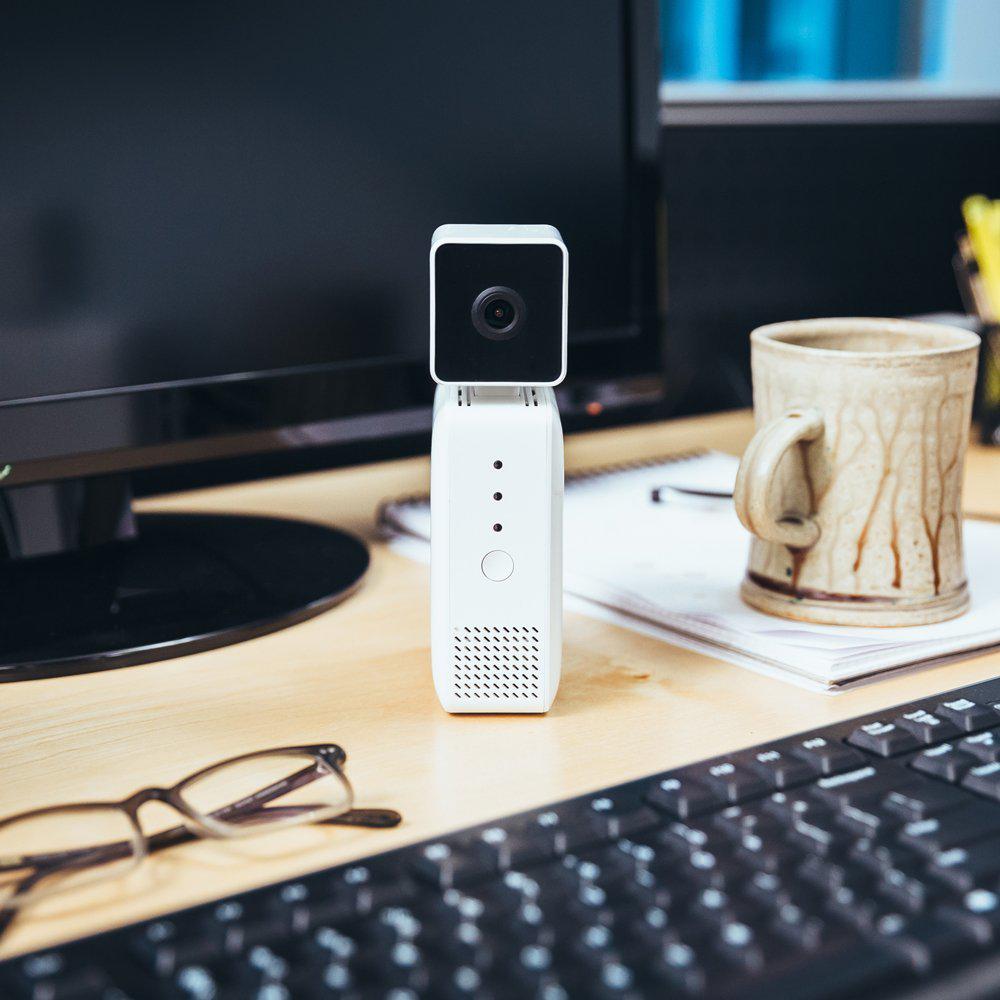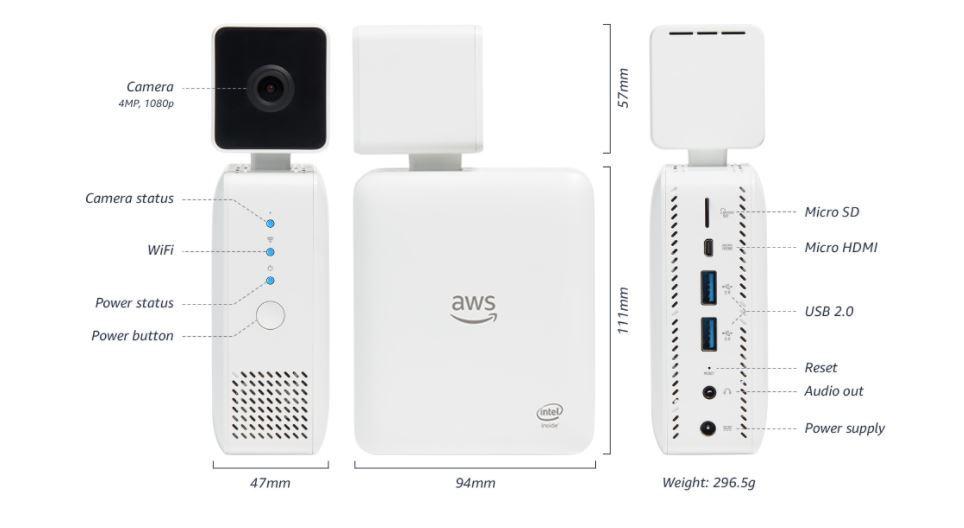Amazon Web Services announced the 240 USD DeepLens, its first fully programmable, deep learning-enabled wireless video camera. AWS and Intel collaborated on the DeepLens camera to provide builders of all skill levels with the optimal tools needed to design and create artificial intelligence (AI) and machine learning products.
The Google Clips competitor has four micro HDMI and two USB ports, along with dual-band WiFi. It’s got an Intel Atom processor and 8GB of RAM inside, running Ubuntu. The camera itself is 4GB, capable of shooting in 1080p / 4 MPixels..
DeepLens combines high amounts of processing power with an easy-to-learn user interface to support the training and deployment of models in the cloud. Powered by an Intel® Atom® X5 processor with embedded graphics that support object detection and recognition, DeepLens uses Intel-optimized deep learning software tools and libraries (including the Intel Compute Library for Deep Neural Networks, Intel clDNN) to run real-time computer vision models directly on the device for reduced cost and real-time responsiveness.
“We are seeing a new wave of innovation throughout the smart home, triggered by advancements in artificial intelligence and machine learning,” said Miles Kingston, general manager of the Smart Home Group at Intel. “DeepLens brings together the full range of Intel’s hardware and software expertise to give developers a powerful tool to create new experiences, providing limitless potential for smart home integrations.”
Developers can start designing and creating AI and machine learning products in a matter of minutes using the preconfigured frameworks already on the device. Apache MXNet* is supported today, and Tensorflow* and Caffe2* will be supported in 2018’s first quarter.




